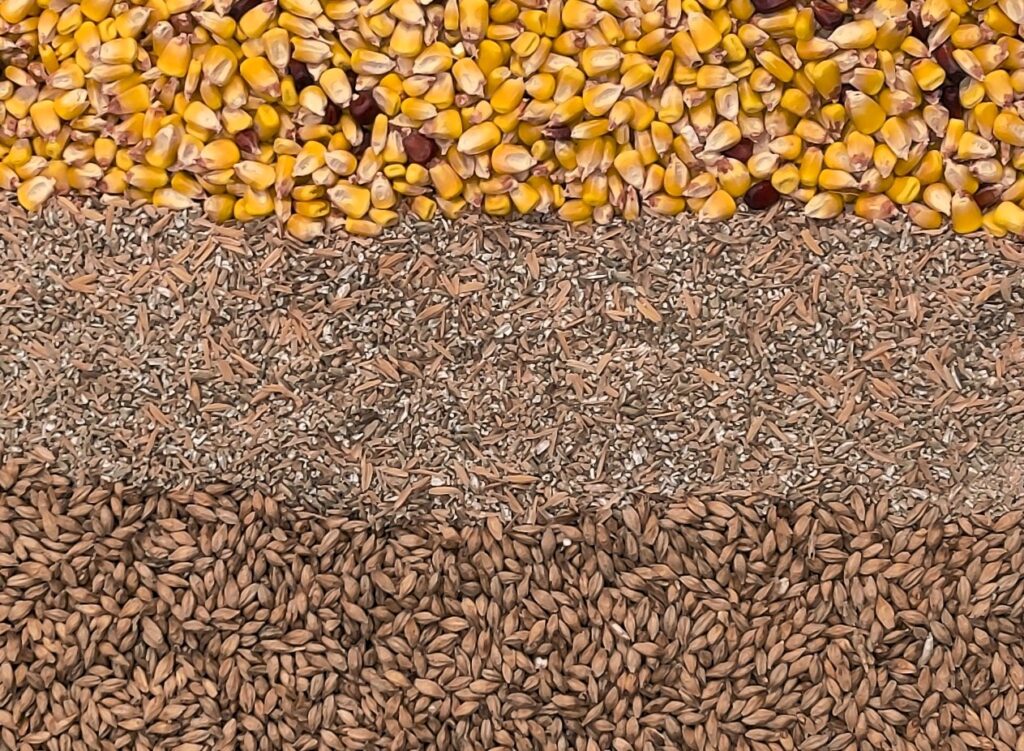 At the heart of every whisky, beer, or grain-based spirit lies a simple ingredient: grain. But not all grains are treated in the same way. Some are malted, undergoing a transformation that activates enzymes and contributes rich flavors. Others remain unmalted, relying on external aids to convert starches into fermentable sugars. So what’s the difference and why does it matter?
At the heart of every whisky, beer, or grain-based spirit lies a simple ingredient: grain. But not all grains are treated in the same way. Some are malted, undergoing a transformation that activates enzymes and contributes rich flavors. Others remain unmalted, relying on external aids to convert starches into fermentable sugars. So what’s the difference and why does it matter?
What Is Malting?
Malting is the process of germinating grain, typically barley, under controlled conditions. During malting, enzymes — particularly alpha- and beta-amylase — are developed within the grain. These enzymes are essential for converting starches into sugars, which yeast later ferments into alcohol.
After germination, the grain is kilned (dried with hot air), which halts growth but preserves enzymatic activity and locks in distinct flavors.
What are Unmalted Grains?
Unmalted grains are raw, ungerminated grains like corn, rye, wheat, or unmalted barley. These grains lack sufficient enzymatic activity to convert their own starches into sugars. To be used in fermentation, they must either:
- Be cooked or gelatinized to make starches accessible
- Be combined with malted grains to harness their enzymes
- Be supplemented with commercial enzymes
What About GMO Corn with Built-In Enzymes?
In recent years, certain strains of genetically modified (GMO) corn have been engineered to express their own amylase enzymes — most notably alpha-amylase — which breaks down starch into sugars during fermentation.
These GMO corn varieties are primarily designed for large-scale ethanol production, but their use has occasionally found its way into industrial distillation and fuel-grade alcohol. While the enzymatic function reduces the need for malted barley or added enzymes, they are rarely used in premium whisky production due to regulatory, flavor, and consumer perception concerns.
In whisky-making — especially in Scotch, Irish, and craft American distilling — GMO grains are often avoided to maintain traditional processes, ensure transparency, and meet certain international export standards. However, for neutral spirits or biofuel, GMO corn with built-in enzymes offers an efficient and cost-effective solution.
Fermentation: The Enzymatic Divide
Malted Grains in Fermentation
- Self-sufficient: Malted grains contain the necessary enzymes to convert starch into sugars.
- Flavor-rich: Adds nutty, biscuit, toasty, and smoky notes (especially if peat is used).
- Slower fermentation onset, but with more consistent sugar release.
Unmalted Grains in Fermentation
- Require enzymatic support: Either from malted grain, commercial enzyme additives, or both.
- Milder base flavor: Corn provides sweetness, rye adds spice, wheat gives smoothness.
- Greater flexibility and cost-efficiency, especially in bourbon or industrial ethanol production.
Example: In bourbon, at least 51% corn is required by law. Since corn is typically used unmalted, distillers include a small percentage of malted barley (usually between 5–15%) to provide enzymes for the mash.
Distillation: Impact of Grain Treatment
Malted Grains in Distillation
- Distillates from malted grains (especially barley) are richer and more aromatic.
- Used extensively in single malt Scotch whisky, where only malted barley is allowed by regulation.
- In pot stills, malt flavor carries through prominently, especially in traditional double distillation.
Unmalted Grains in Distillation
- Often result in lighter, cleaner distillates, particularly when column stills are used.
- Corn-based spirits lean toward vanilla, sweet corn, and light floral aromas.
- Used for producing neutral spirits or as the base in blended whisky.
Enzymatic Efficiency & Production Considerations
| Feature | Malted Grain | Unmalted Grain |
|---|---|---|
| Enzyme Source | Internal (self-contained) | External (malt or commercial enzymes) |
| Flavor Contribution | High (from Maillard reactions) | Mild to neutral |
| Cost | Higher (due to malting) | Lower |
| Starch Accessibility | Ready after malting | Requires cooking |
| Used In | Scotch, craft malts, beer | Bourbon, vodka, blends |
Why Use Unmalted Grains?
- Cost Effective: Malting is expensive; using raw grain cuts costs.
- Flexibility: Rye, corn, and wheat bring unique textures and flavors.
- Industrial Efficiency: High-yield distilleries use commercial enzymes to replace malt.
Why Use Malted Grains?
- Tradition & Regulation: Scotch whisky mandates 100% malted barley in single malts.
- Flavor Profile: Toasty, nutty, smoky tones from malted grains can’t be faked.
- Artisanal Control: Small distillers often malt their own grains for unique signatures.
What Are Maillard Reactions?
The Maillard reaction is a chemical process that occurs when amino acids and sugars interact under heat, creating a cascade of browning, flavorful, and aromatic compounds. It’s the same reaction that gives baked bread, roasted coffee, and grilled meat their rich, toasted flavors.
In whisky production, Maillard reactions occur primarily during two phases:
- Kilning malted barley: As barley is dried in kilns — sometimes over peat fires — Maillard reactions generate toasty, biscuity, and nutty flavors that are carried through into the spirit.
- Toasting or charring oak barrels: When whisky matures in charred or toasted oak, the heat-altered wood contributes caramel, vanilla, spice, and dark chocolate notes, all thanks to Maillard chemistry.
This reaction is one of the key reasons why malted grains, and properly aged whiskies, deliver such deep, layered, and savory flavor profiles. It’s also one of the main reasons your whisky has its signature golden, caramel, or copper hue.
Why It Matters
The Maillard reaction builds the backbone of flavor.
It creates hundreds of volatile compounds that contribute to the aroma and taste of both the fermented mash and the matured whisky.
It’s one reason why malted grain distillates are so much more flavorful and complex than those made from raw, unmalted grain.
Key Takeaway
The Maillard reaction is what gives whisky its warm, toasted, and deeply savory notes — think roasted nuts, biscuits, cocoa, and caramel. Without it, your dram would be far less delicious.
Scientific Angle: Enzymatic Reactions
Alpha-amylase breaks down starch into dextrins, and beta-amylase converts dextrins into maltose. Malting activates both, while unmalted grains must rely on external enzyme supplementation.
Examples in Whisky Production
- Single Malt Scotch: 100% malted barley; pot distilled; minimum three years aging in Scotland.
- Bourbon: Typically 70–80% corn (unmalted), 10–15% rye or wheat, and 5–10% malted barley.
- Irish Whiskey: Often uses both malted and unmalted barley; triple distilled; smooth and creamy texture.
- Japanese Whisky: Usually malted barley-based; style mimics Scotch; known for delicate nuance.
- Canadian Whisky: Primarily unmalted grains, blended with malt whisky for complexity.
Verdict: Malt vs. Unmalt—A Matter of Purpose
Whether a grain is malted or not changes its role in both fermentation and distillation. Malted grains offer enzymatic autonomy and rich flavor, while unmalted grains offer efficiency and versatility. There is also a cost factor. Malted grains are more expensive. Experienced distillers don’t choose one over the other — they understand how to use both to craft distinctive spirits.
Citations & Resources
- Gavillet, Sébastien. Discovering and Mastering Single Malt Scotch Whisky. Bære & Uvæ Publishing, 2012.
- Scotch Whisky Association – www.scotch-whisky.org.uk
- Jackson, Michael. Whisky: The Definitive World Guide. DK Publishing.
- American Distilling Institute – www.distilling.com
- The Whiskey Wash Technical Archive – Enzymes and Grain Chemistry.
